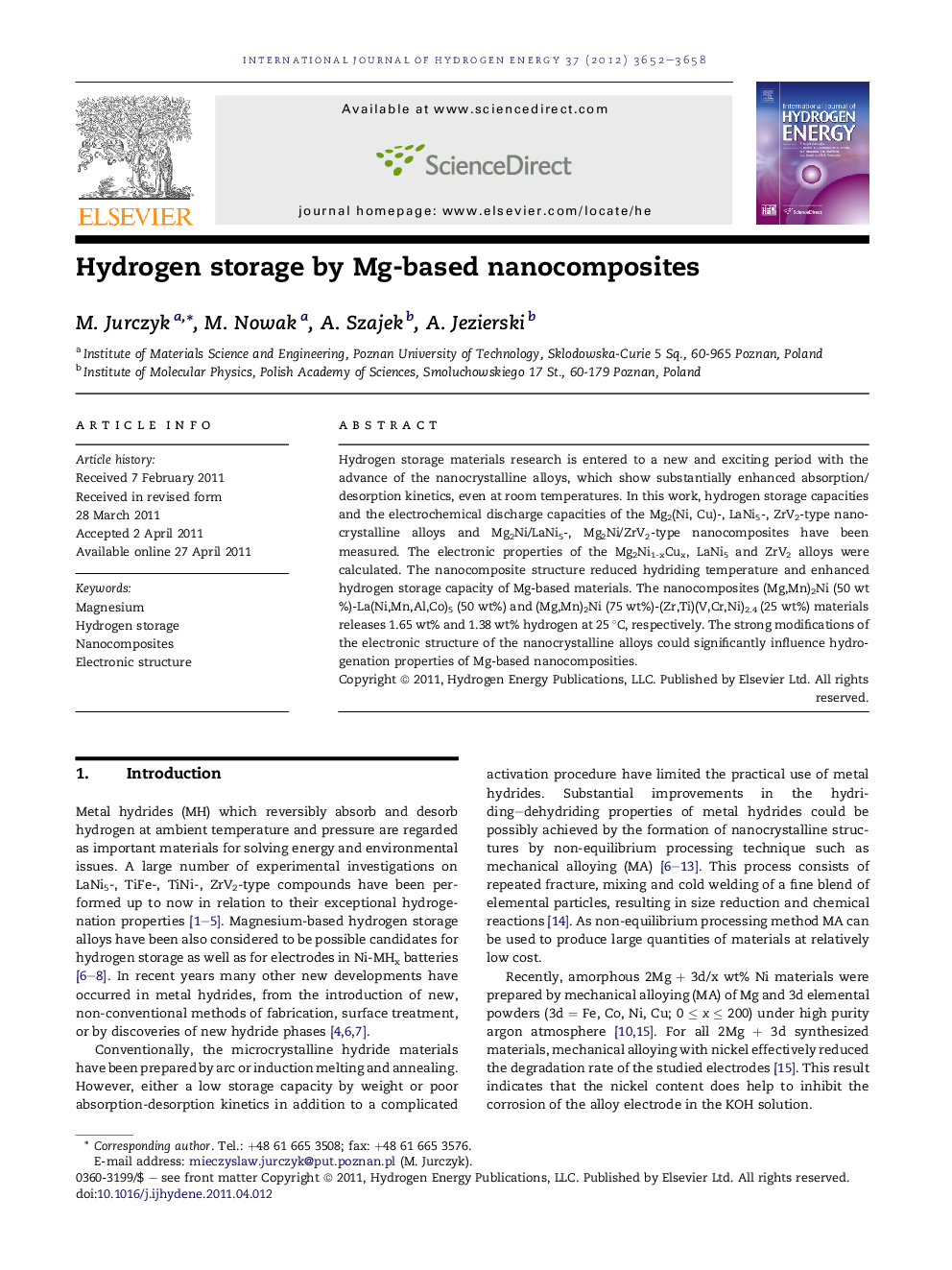| Article ID | Journal | Published Year | Pages | File Type |
|---|---|---|---|---|
| 1282376 | International Journal of Hydrogen Energy | 2012 | 7 Pages |
Hydrogen storage materials research is entered to a new and exciting period with the advance of the nanocrystalline alloys, which show substantially enhanced absorption/desorption kinetics, even at room temperatures. In this work, hydrogen storage capacities and the electrochemical discharge capacities of the Mg2(Ni, Cu)-, LaNi5-, ZrV2-type nanocrystalline alloys and Mg2Ni/LaNi5-, Mg2Ni/ZrV2-type nanocomposites have been measured. The electronic properties of the Mg2Ni1-xCux, LaNi5 and ZrV2 alloys were calculated. The nanocomposite structure reduced hydriding temperature and enhanced hydrogen storage capacity of Mg-based materials. The nanocomposites (Mg,Mn)2Ni (50 wt%)-La(Ni,Mn,Al,Co)5 (50 wt%) and (Mg,Mn)2Ni (75 wt%)-(Zr,Ti)(V,Cr,Ni)2.4 (25 wt%) materials releases 1.65 wt% and 1.38 wt% hydrogen at 25 °C, respectively. The strong modifications of the electronic structure of the nanocrystalline alloys could significantly influence hydrogenation properties of Mg-based nanocomposities.
► Reduced hydriding temperature of Mg-based materials. ► Enhanced hydrogen storage capacity of Mg-based materials. ► The Mg-based nanocomposites releases 1.65 wt% hydrogen at 25 °C.
